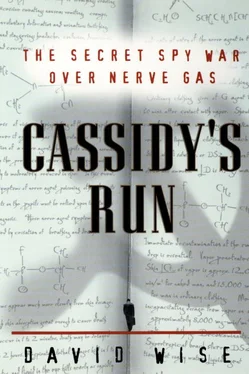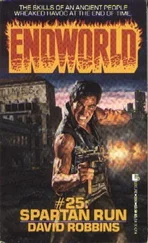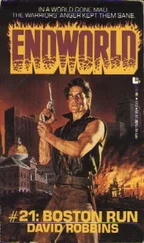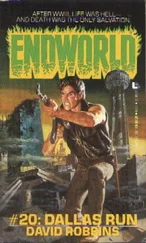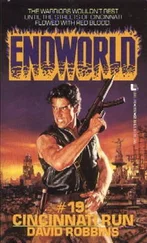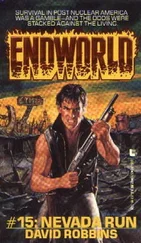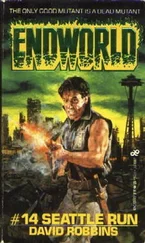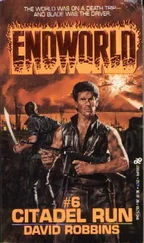The university offered Chicano studies as a major for undergraduate students. The faculty taught a wide variety of courses dealing with the history and social status of Mexican Americans, bilingual education, and the Spanish language. The university bulletin for the summer of 1977, for example, lists a typical course taught by Professor Lopez. Entitled Chicano History, it offered four degree credits and covered “Mexican American history, including such areas as migration, labor movements, Chicanos in agriculture, the ‘pachuco’ phenomenon, border conflict, and regional history.” [2] “ Pachuco is a term for a cool guy, a Mexican American in the 1940s who wore zoot suits and was considered a hipster,” according to Lisa Navarrete, director of public information for the National Council of La Raza.
The FBI watched Lopez and listened to his telephone conversations to try to determine whether he was still servicing dead drops for the GRU while exploring Chicano history for his unsuspecting students. The bureau’s counterintelligence agents hoped that Lopez would lead them to one or more Soviet spies.
After Robert Schamay flew in from Utah, he remained in Minnesota for three months. His primary task was to brief Mark Kirkland, who had been assigned as the case agent by the Minneapolis office. “Mark had the ticket on it,” Schamay said. “He was a nice, hardworking kid from Salt Lake, anxious to do a good job.”
Around the same time, Charles W. Elmore, a thirty-one-year-old FBI agent in New York, asked his fellow agent Jim Lancaster about the PALMETTO case. Elmore was from the West Coast and wanted badly to get back there. Perhaps, he thought, if he volunteered to go out to Minnesota to help on the PALMETTO case, he would be rewarded with his office of preference. A quiet, good-looking man, Elmore was single and had no ties to New York. More important, he was fluent in Spanish. He won a transfer to Minneapolis and went to work translating the wiretaps of the Lopezes’ apartment.
Back in Washington, Phil Parker had been transferred to FBI headquarters from the Washington field office early in 1976. He had been head of S-3, the GRU squad in the field office. Now Parker was determined to do something about the PALMETTOs. At headquarters he became the case supervisor and the major player in the events that unfolded.
“It had been my squad’s case,” he said. “I had participated in surveillance of several of the meetings between WALLFLOWER and the Russians. Both stationary and rolling surveillances”—meaning stakeouts in a building, or cars driving around in the area.
At headquarters, Parker was assigned to the Soviet section of Division 5, the intelligence division. [3] In 1993, the intelligence division was renamed the national security division.
He was forty years old. A tall, handsome Virginian, Parker defied the conventional straight-arrow appearance long adhered to by FBI agents, a code that had been strictly enforced by J. Edgar Hoover and lingered on even after his death. Parker sported a handlebar mustache that made him look like an old-fashioned movie villain or a bartender in a Wild West saloon, for which he took a great deal of good-natured ribbing from his less flamboyant colleagues. When it came to counterintelligence work, however, Parker was all business.
He had not set out in life to become a counterspy. In fact, Parker might never have joined the FBI had the pay been better for high-school teachers. He was born in Chesapeake, Virginia, across the Elizabeth River from Norfolk. His father had been a radio operator on merchant ships, and his mother worked as a printer. Parker attended public schools, went to college for a while, and in 1955 joined the air force, which sent him to Syracuse University to study Russian.
The air force then assigned Parker to England in an intelligence job, where he met his future wife, Jill, an attractive Englishwoman from Bedford. After returning to the states, Parker finished college, and then earned a master’s degree in Russian at Indiana University. He also traveled to the Soviet Union, visiting Moscow, Leningrad, and five other cities.
Back home, Parker taught Spanish and Russian at a local high school and coached junior-varsity football. Parker enjoyed teaching but was trying to support his now-growing family on $5,500 a year. In 1965, at age twenty-nine, he applied for a job at the FBI.
The bureau sent him to its training base at Quantico, Virginia, to learn to shoot, then to the Seattle office, and then to language school in Monterey to study Bulgarian. In 1967, he was assigned to the Washington field office, where he acquired the basics of counterintelligence work and followed Bulgarian spies around the capital. Three years later, Parker moved to the GRU squad.
“The GRU was our main target,” Parker recalled. “We also handled some Polish and East German cases. We worked out of the Old Post Office building. The squad had great morale. We turned some Soviets. Our job was to identify which ones were intelligence officers.” In 1973, Parker was promoted to head of the squad. Three years later, he was transferred to headquarters.
“When I went to headquarters,” he said, “my sole goal was to close this case with an arrest.”
The FBI hadsent Mark Kirkland to the Minneapolis division in June 1973. He was twenty-eight. It was there that he began flying with Tren Basford on aerial surveillances. Kirkland and his wife, Julie, moved into their farmhouse in Minnetonka and started a family. Their first son, Kenneth, was born in 1974, and a second son, Christopher, was born in 1976, the same year that Mark was handed his first big case—the PALMETTO file.
From an early age, Kirkland’s ambition was to be an FBI agent. He was born into a Mormon family on August 8, 1944, and grew up in Centerville, Utah, north of Salt Lake City. “Centerville was a very small town, but he was kind of a rebel,” Julie Kirkland said. “He had a motorcycle and bleached his hair white once.” He went to high school in nearby Bountiful, and then struck out on his own.
“He was only eighteen or nineteen when he left to be an FBI clerk. His parents were very unhappy that he was leaving town. He couldn’t wait to get out of Centerville.”
Kirkland moved to Los Angeles, enrolled in California State University, and began working for the FBI in the spring of 1964. He was tall, dark-haired, handsome, and single. Two years later, he married a young woman who also worked as a clerk in the bureau. They had a daughter, Kristin. Kirkland and his best friend at the FBI, Ron Williams, had both joined the army reserve, and they each did a three-year hitch in Germany, where Mark worked in intelligence. Kirkland returned to the states and to the FBI in the summer of 1969. Soon afterward, his youthful marriage ended in divorce.
A year later, Julia Searle, who had grown up in Venice, California, graduated from high school there and landed a clerical job at the FBI in Los Angeles while attending college at night. She was eighteen, with dancing eyes, a pug nose, and long brown hair. Kirkland was eight years her senior. He worked the night shift, on a different floor, but they met, early in 1971, and began dating. Mark and his friends called her Julie.
That same year Kirkland graduated from Cal State, and the following January he and Julie were wed at the Mormon temple in Los Angeles. Three months later, at age twenty-seven, he was appointed a special agent of the FBI.
Julie Kirkland’s parents were both teachers. Her father had a doctorate from UCLA and taught theology at Santa Monica City College; her mother gave private lessons in piano and music theory. Like Mark, Julie came from a Mormon background.
Three months after their marriage, the FBI sent Kirkland to Oklahoma City, for what the bureau calls a “first office” assignment. Less than a year later, he was assigned to Minneapolis.
Читать дальше
